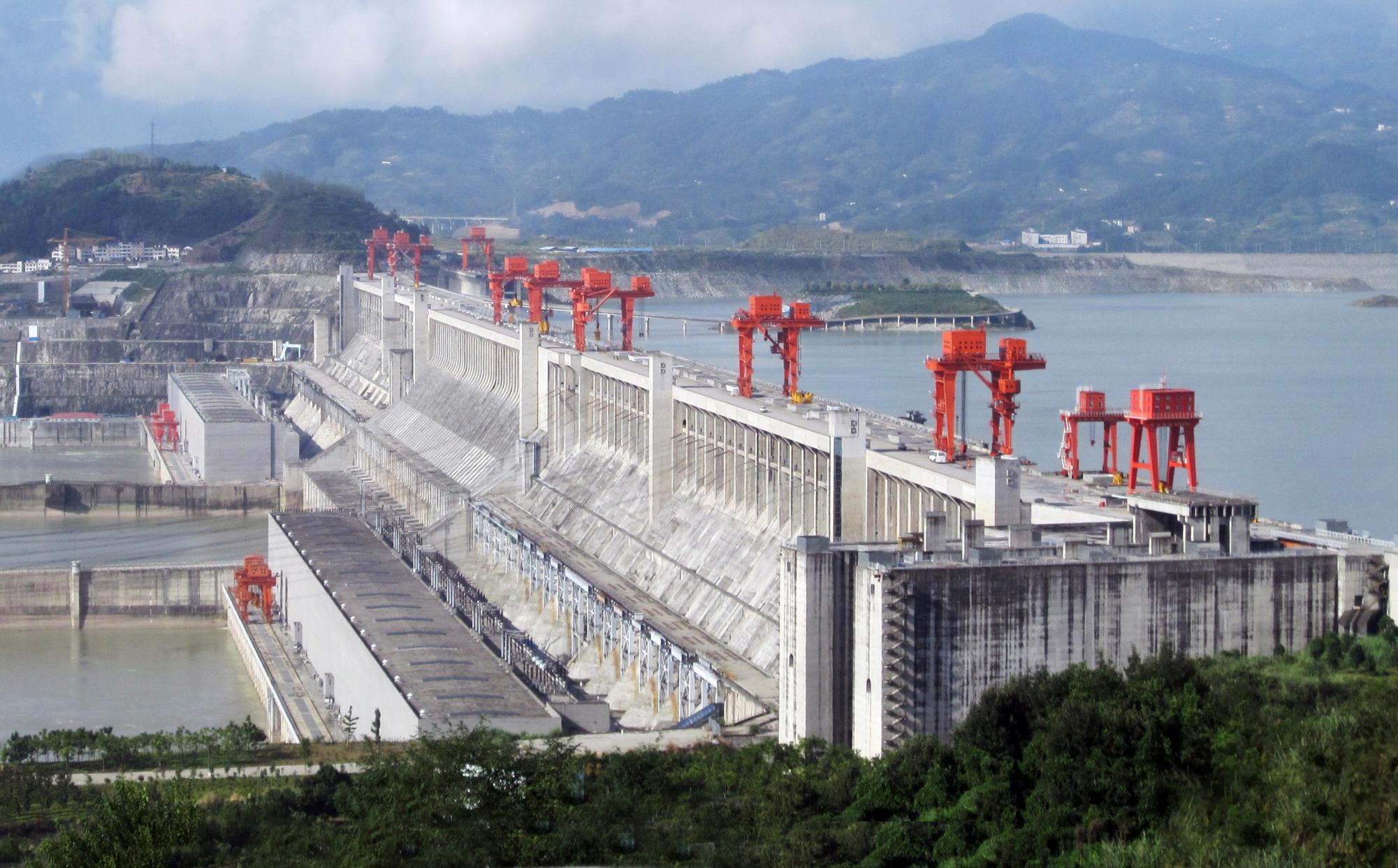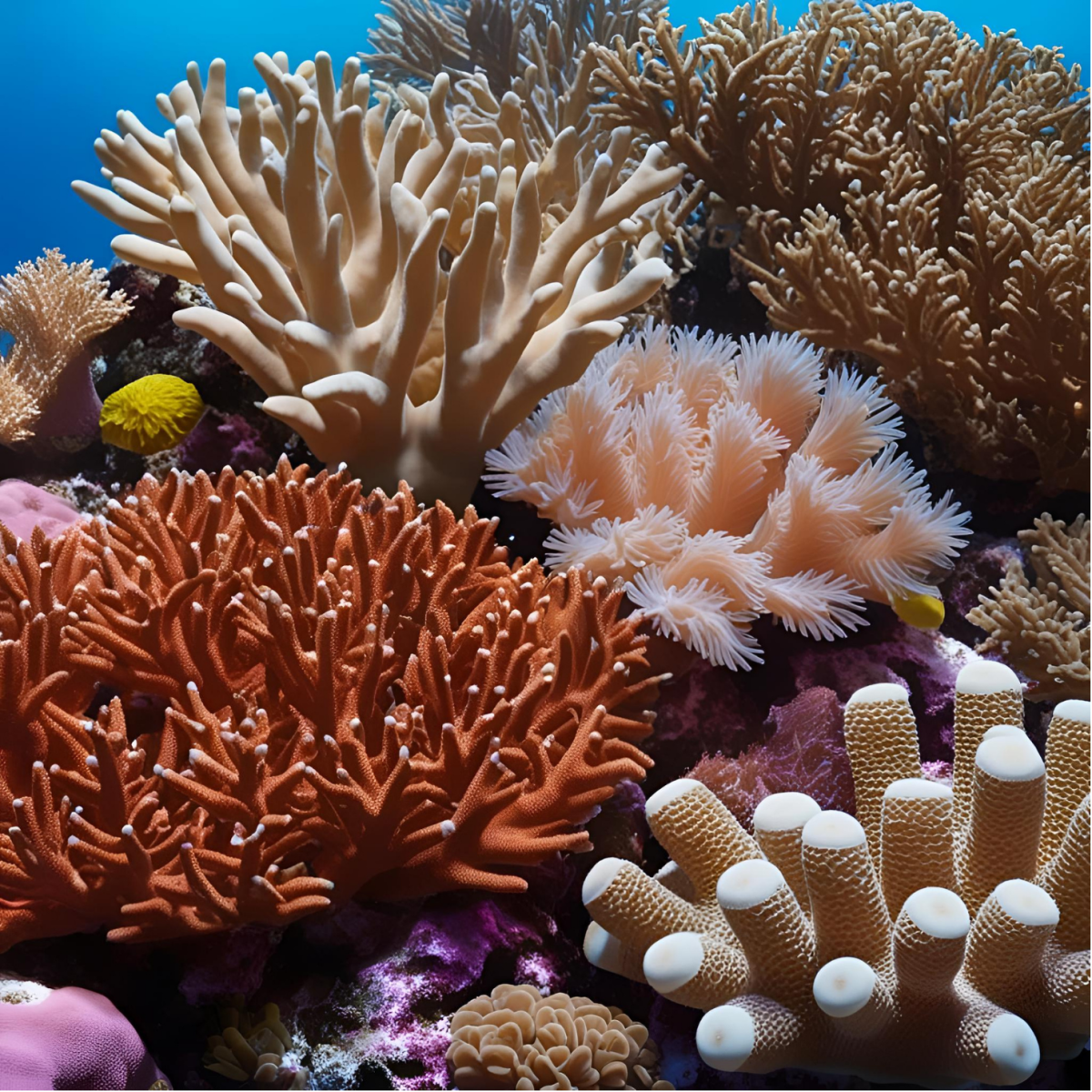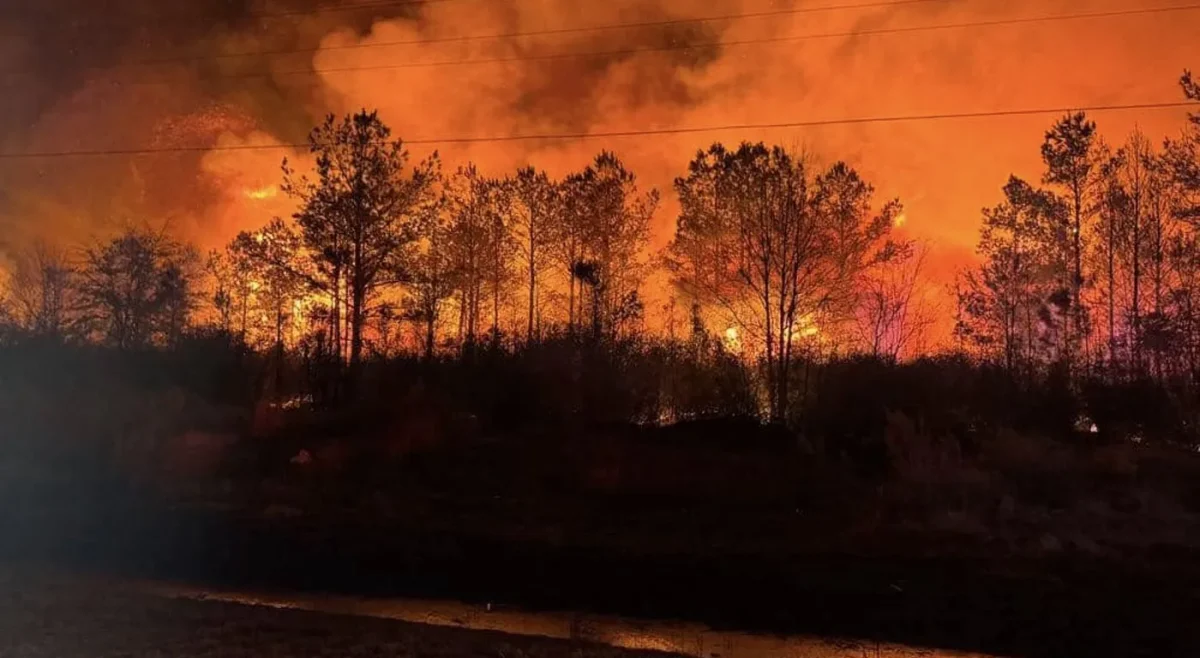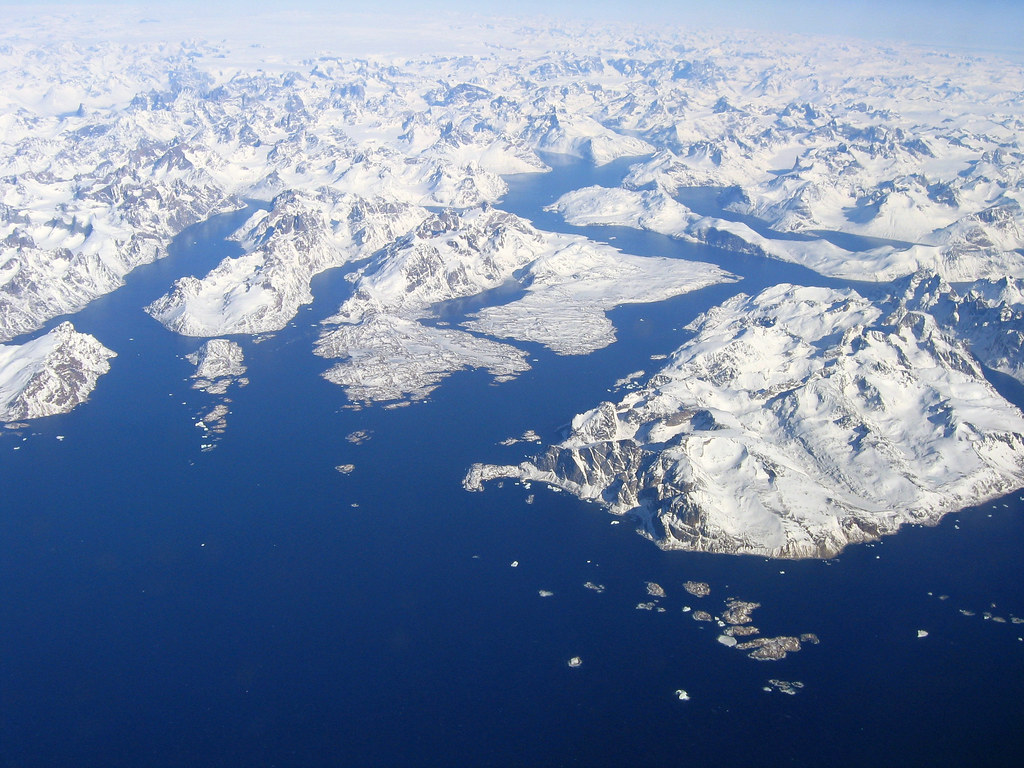Having more than 30,000 cubic meters of water per second pass through and 960 billion cubic meters per year, the Three Gorges Dam is the biggest hydroelectric dam in the world, located on the Yangtze River in China. During flood season, water passing through can surpass 1.2 trillion cubic meters per year, and the Three Gorges Reservoir, located behind the dam itself, can hold up to more than 10 trillion U.S. gallons of water at one time. That’s enough to fill 15 million Olympic-sized swimming pools or provide every person on earth with 5,000 liters of water.
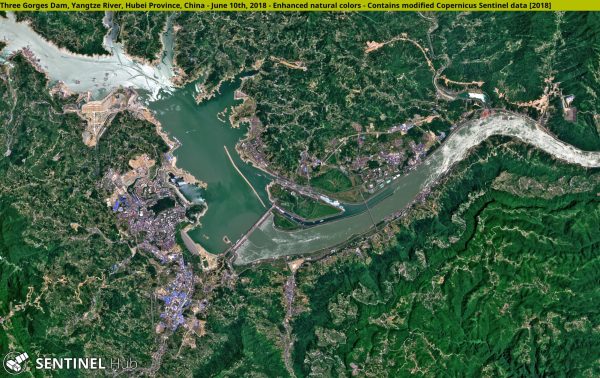 Recently, NASA discovered that the reservoir is slowing Earth’s rotation by .06 microseconds due to its weight when at max capacity. From top to bottom, the reservoir measures 175 meters or 574 feet deep. The water level is usually kept between 145 meters and 175 meters while still allowing flow through the dam for electricity generation. In the event the water is rising about the 175-meter mark, or incoming rain is expected, they open the spillways of the dam to relieve pressure and prevent flooding. Operators may also open the spillways if electricity dependence is high or the downstream water level is low. Though allowing water to flow through the dam has a beneficial purpose, there are also several reasons they may hold back water instead. If the downstream water level is too high, they may shut some of the spillways to prevent flooding and to preserve the health of the river ecosystem. They may also do so to allow water to build up in the reservoir for the dry seasons to ensure consistent electricity generation.
Recently, NASA discovered that the reservoir is slowing Earth’s rotation by .06 microseconds due to its weight when at max capacity. From top to bottom, the reservoir measures 175 meters or 574 feet deep. The water level is usually kept between 145 meters and 175 meters while still allowing flow through the dam for electricity generation. In the event the water is rising about the 175-meter mark, or incoming rain is expected, they open the spillways of the dam to relieve pressure and prevent flooding. Operators may also open the spillways if electricity dependence is high or the downstream water level is low. Though allowing water to flow through the dam has a beneficial purpose, there are also several reasons they may hold back water instead. If the downstream water level is too high, they may shut some of the spillways to prevent flooding and to preserve the health of the river ecosystem. They may also do so to allow water to build up in the reservoir for the dry seasons to ensure consistent electricity generation.
The Three Gorges Dam helps power more than 15 major cities in China, like Shanghai and Chongqing. It can do so directly by powering a city’s power grid if close enough or indirectly with the use of transmission lines to other cities or the national power grid. Being the world’s largest hydroelectric power station, the dam on average generates a staggering 100 billion kWh of electricity per year, with its record year being 2020 at 111.8 kWh. To put that into perspective, that’s enough energy to power 9.3 million U.S. households for a year. It generates electricity by using turbines, which are spun by the fast-moving water, which spins generators, converting the spinning motion into electricity. The dam’s total installed capacity is about 22.6 GW of electricity, meaning if all flood gates were to be opened, the dam would generate 22.6 GW of power. Very rarely do they open all the gates of the dam, as they only do so under extreme conditions. In 2020, China experienced one of the worst flood seasons in several decades. 11 visible gates were opened, as well as several more underwater gates, to prevent overflowing of the reservoir and to relieve pressure on the structure of the dam.
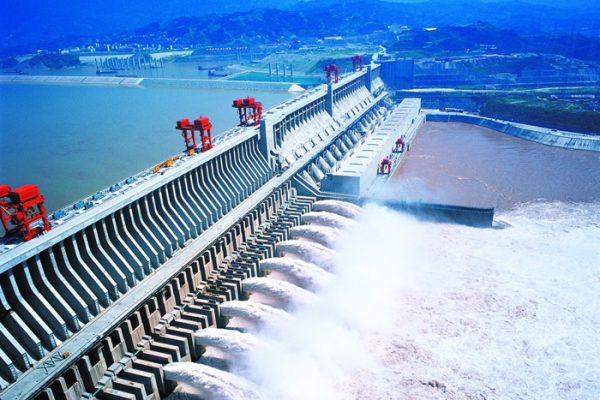 The dam has two different channels for water flow: the flood release channel and the power generation channel. The flood release channels are larger than the power generation channels as they’re meant for volume, not efficiency. They are designed to handle sudden, massive flows of water through the dam to relieve pressure and prevent flooding, but do not create electricity. Flood channels are capable of releasing tens of thousands of cubic meters of water per second, and there are 23 sluice gates, which are lower level, and 22 surface spillway gates in total. Power generation channels are smaller, designed to control and regulate the flow through the turbines. They are built for efficiency but not for large volumes of water simultaneously, as the high pressure and debris could damage the turbines. If more electricity is needed, they may open more power channels to compensate.
The dam has two different channels for water flow: the flood release channel and the power generation channel. The flood release channels are larger than the power generation channels as they’re meant for volume, not efficiency. They are designed to handle sudden, massive flows of water through the dam to relieve pressure and prevent flooding, but do not create electricity. Flood channels are capable of releasing tens of thousands of cubic meters of water per second, and there are 23 sluice gates, which are lower level, and 22 surface spillway gates in total. Power generation channels are smaller, designed to control and regulate the flow through the turbines. They are built for efficiency but not for large volumes of water simultaneously, as the high pressure and debris could damage the turbines. If more electricity is needed, they may open more power channels to compensate.
Building the dam, measuring at 7,660 feet long and 607 feet tall, was not a cheap or speedy process whatsoever. It cost approximately $28 billion to build, $18 billion for the initial construction, and another $10 billion for the resettlement of more than 1 million people. The construction of the dam took about 17 years, from 1994 to 2006, for the dam wall alone, then became fully operational in 2012. The Three Gorges Dam used about 27.2 million cubic meters of concrete to build, and over 102 million cubic meters of earth and rock were excavated. Roughly 463,000 tons of steel were used, equivalent to about 63 Eiffel Towers and over 25,000 workers were employed on the site. It was also equipped with a ship lift, mainly used for smaller ships, which works similarly to an elevator lifting ships up and down, and 2 5-stage ship locks to allow vessels to pass through by lifting and lowering using water. The ship lock is capable of carrying ships that weigh more than 10,000 tons, but it can take 3-4 hours were whereas the lifts can take as little as 30 minutes.
The Three Gorges Dam was built for several purposes. The Yangtze River has a long history of devastating floods. The dam helps regulate water flow, protecting millions of people and farmland downstream, and stores water in the reservoir for China’s dry seasons. It was also built as an alternative to coal as the dam provides clean, renewable energy for China’s growing electricity demand. It also benefits navigation for larger ships using the Yangtze River by raising the water level. The dam boosted economic development by creating more than 2500 jobs that involve maintaining and monitoring the dam.
Not everyone is in support of the dam, as there is a lot of controversy and criticism about the dam and its impacts. While it does provide benefits like electricity and blood control, some argue the costs are too high environmentally and financially. The dam also caused the relocation of over 1.3 million people due to the reservoir flooding a large residential area upstream. Towns, villages, farmland, and cultural sites were submerged, and people currently living in the area are at risk of landslides or flooding due to the pressure of the reservoir. To this day, the dam remains one of the most debated infrastructure projects in the world.


